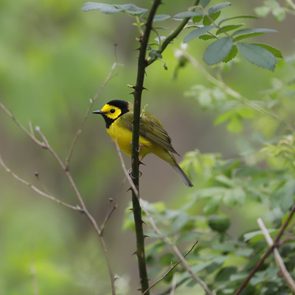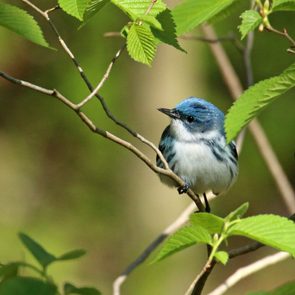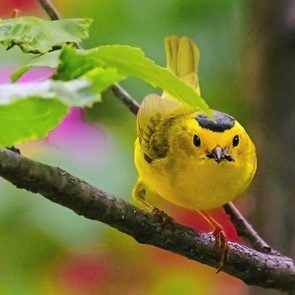Identify and Attract a Yellow-Rumped Warbler
Updated: Mar. 27, 2023
See what a yellow-rumped warbler looks like. Plus learn what they eat, when they migrate and why they're nicknamed butterbutts.
Our editors and experts handpick every product we feature. We may earn a commission from your purchases.
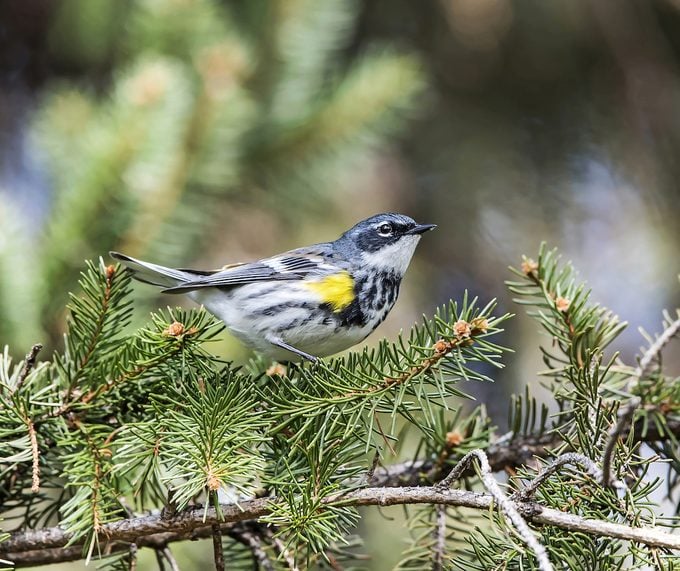
Backyard warbler sightings can be pretty rare, since most of these birds don’t frequent feeders. From time to time, though, yellow-rumped warblers will drop by for a snack. Learn how to identify and attract these birds.
What Foods Do Yellow-Rumped Warblers Eat?
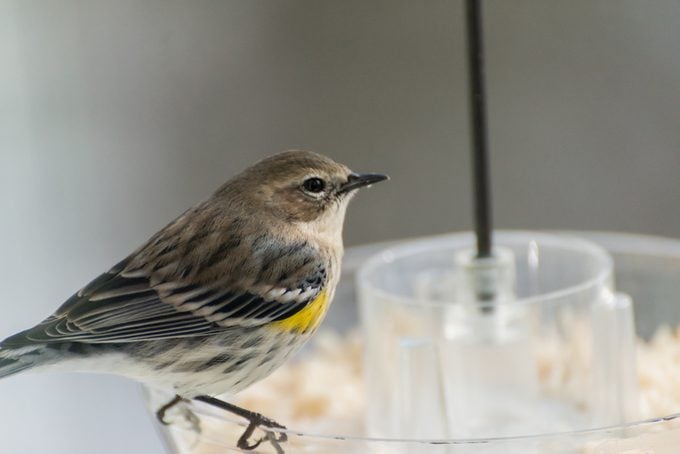
Like many other warblers, yellowrumps gorge themselves on insects throughout the warmer months. But they switch to berries in fall and winter, especially bayberry and wax myrtle fruit.
“It’s actually difficult for animals to digest wax, but the yellow-rumped warbler can,” says Kevin J. McGowan of the Cornell Lab of Ornithology’s Bird Academy. “Wax myrtle and bayberry are abundant along the East Coast, and because this warbler can eat their berries, it can winter all the way north to Nova Scotia.”
In fact, Kevin theorizes that this is why yellow-rumps are one of the few warblers to visit backyard buffets. “They use feeders more when the local crop of wax myrtle or bayberry fruits get low,” he says. “They especially like suet and peanut butter.”
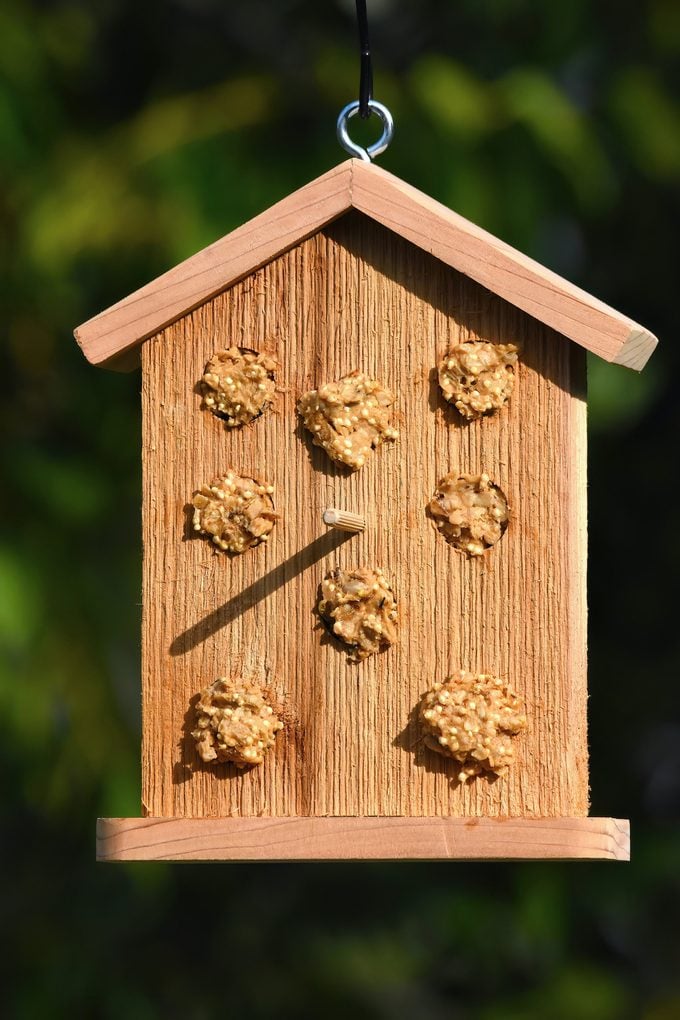
Entice adaptable yellow-rumped warblers with this natural red cedar bird feeder house.
Learn more about what foods warblers eat.
What Does a Yellow-Rumped Warbler Look Like?
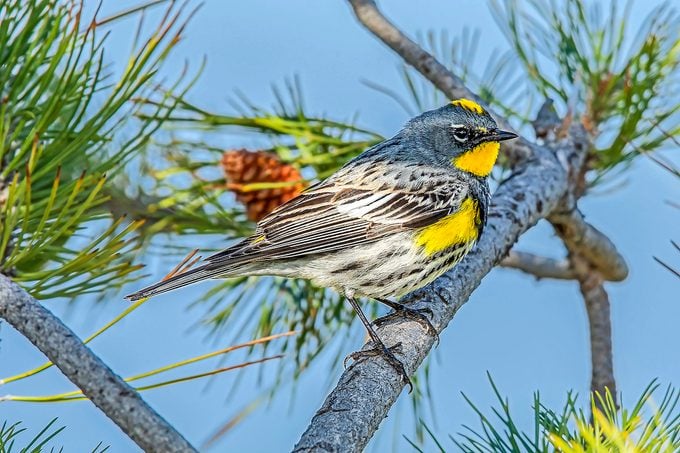
As their affectionate “butterbutts” nickname and their common name both imply, these birds boast a bright yellow patch on the lower back, just above the tail. During spring and summer breeding, both sexes are gray and black with small patches of yellow at the sides of the chest and on the center of the crown. Winter lightens the grays into browns, but the yellow rump remains a constant throughout the seasons.
The Myrtle subspecies, with its white throat and eyebrow stripe, is more common in the East. Out west, the Audubon’s has a yellow throat and no eyebrow stripe.
At the Lagerman Agricultural Preserve in Longmont, Colorado, I got this shot of a male yellow-rumped warbler of the Audubon’s subspecies (above),” says Carl Muehlemeyer of Broomfield, Colorado.
Learn what a yellow warbler looks like.
Nests and Eggs
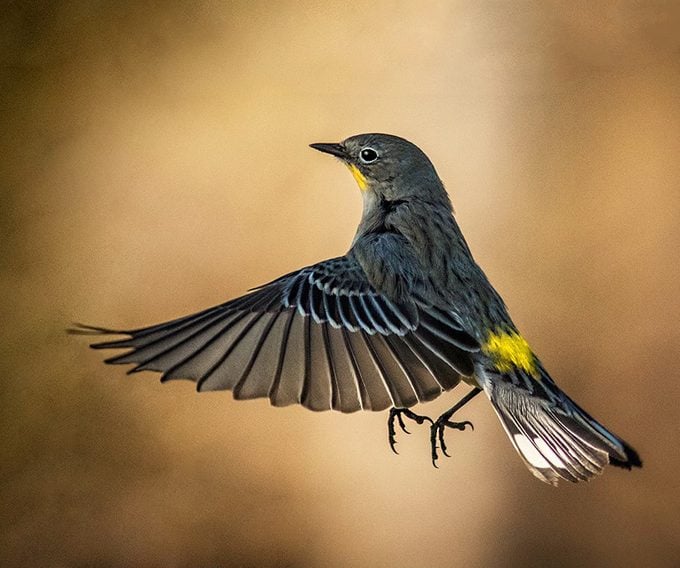
When spring arrives, yellowrumps head farther north to pair up and breed. Out west, they also work their way higher up into the mountains, looking for the coniferous forests they love. The white-throated myrtle nests from New England to Alaska, and the yellow-throated Audubon’s nests throughout the forests and mountains of the West.
Females build nests in a variety of trees, where each bird can lay up to six speckled eggs. She does most of the incubation herself, but her mate helps feed the hatchlings until they fledge, which takes about two weeks. A pair may raise two broods a year.
Attract a prothonotary warbler with a birdhouse.
Migration
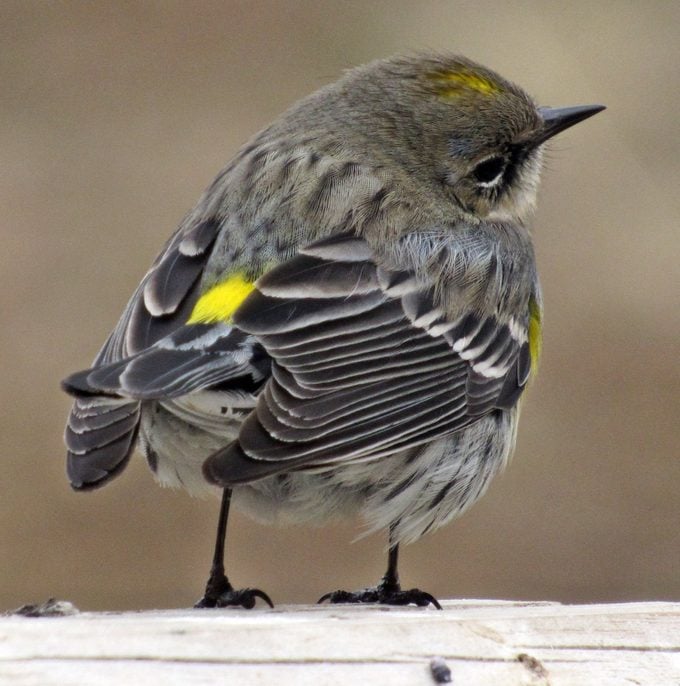
To draw butterbutts in during spring migration, offer peanut butter, berry-filled suet or raisins, along with refreshing water features for them to enjoy. “Yellow-rumped warblers are the last warblers in fall to migrate through,” Kevin says. This also makes them one of the last to arrive in their wintering grounds throughout the southern U.S. and down through Central America. By late winter, when some berry crops are low, expect to see yellowrumps on feeders more often.
This warbler winters widely across the United States and can thrive in cold weather without migrating to the tropics.
Don’t miss these breathtaking Blackburnian warbler photos.
Range
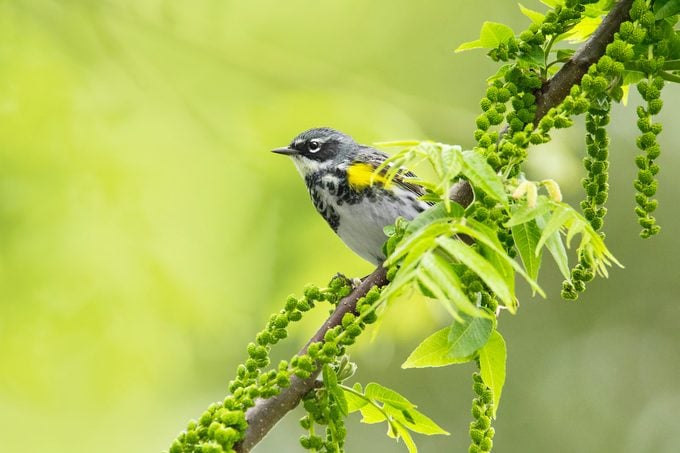
North America boasts more than 50 species of warblers; this one is probably the most abundant. Their population may be as high as 150 million. There are four forms, all with distinct appearances. Look for myrtles in the East and far North and Audubon’s in the West. The other two forms live in Mexico and Guatemala.
Learn how to identify a palm warbler.
Call
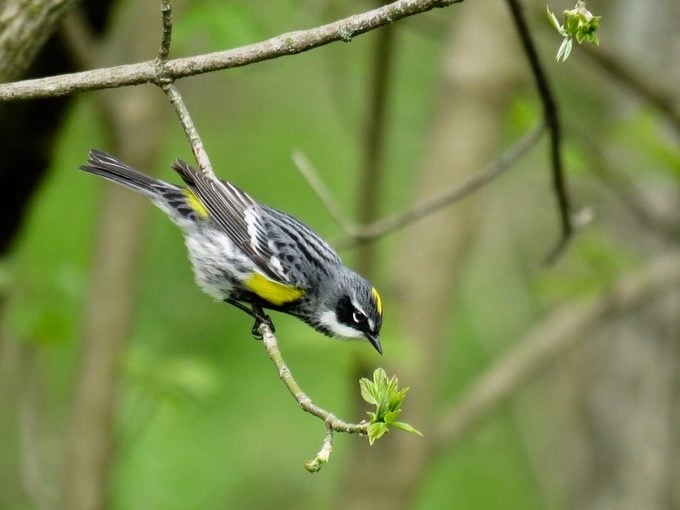
If you’re near a bayberry or other myrtle shrub, listen for the yellow-rumped warbler call—a signature sharp chip.





















